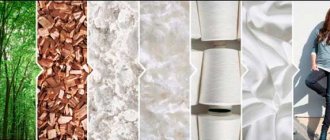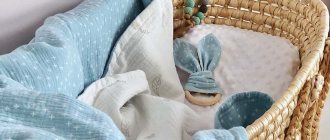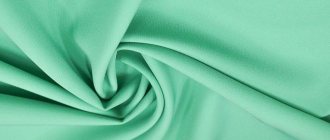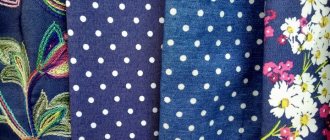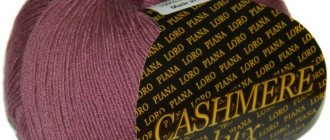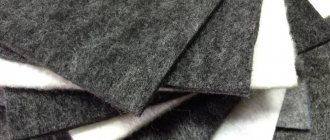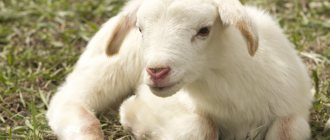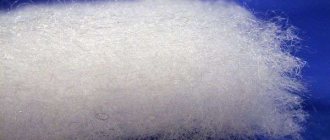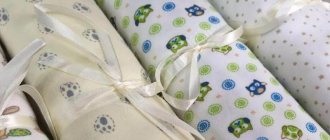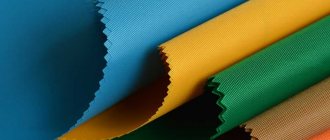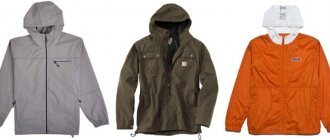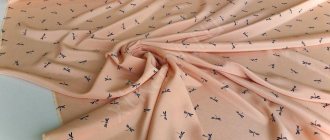The name “cashmere” can be heard applied to a wide variety of wardrobe items. This is the name of thin and soft coat fabric, expensive jumpers, fluffy hats, thin shawls and other beautiful, stylish and warm things. However, it should be remembered that real cashmere contains only elite down, the cost of which is very high - but for decades it does not lose properties such as softness, elasticity, beautiful appearance and the ability to warm.
Products made from this fabric are often shown in exclusive collections of leading high fashion houses, and movie and show business stars often pose for glossy photos in simple but very expensive cashmere jumpers and dresses.
Properties and composition of cashmere
Unique properties are determined by the raw materials from which the fabric is woven.
What is cashmere fabric made from?
The fluff of Kashmiri mountain goats is used for production. It is obtained manually , that is, the excess undercoat is combed out during the molting period. The most valuable raw material is considered to be the down of goats living in India and Mongolia.
The climatic features of the region contribute to the formation of undercoat with certain properties. Natural cashmere has a number of advantages:
- Low thermal conductivity. The hollow structure of the fibers retains air, which allows you to retain heat. The heat-protective properties are many times superior to wool.
- High strength. Despite the porous structure, the fibers are elastic and durable. It practically does not wrinkle and retains its shape well.
- Soft, delicate structure. Cashmere thread is many times thinner than silk and even human hair. It is soft and causes pleasant tactile sensations.
- High hygienic properties. Comfortable to wear, breathable, hygroscopic.
- Hypoallergenic. Natural fibers of animal origin do not cause itching or irritation of the skin.
Disadvantages include high cost and high maintenance requirements. In addition, pellets may form on the surface.
Color and dyeing features
Natural color indicates high quality. Goat down is weakly colored, the dyes quickly lose their brightness, so the fabric takes on a faded, slightly smoky shade.
Dyed fibers become less soft and elastic. Therefore, they try not to dye cashmere. Most often, the canvas retains its natural, slightly muted color . It matches the colors of Kashmiri goats: white, smoky gray, beige, dark brown.
What you need to know about the composition
Natural cashmere contains 100% goat down . To produce high-quality threads, the best raw materials are selected: long, thin fibers. Sometimes manufacturers use short, loosely twisted threads, which saves on the cost of raw materials.
As a result, the fabric retains increased softness, but becomes less dimensional stable. In addition, it is allowed to use cashmere thread with the addition of wool (20-40%).
Natural cashmere is an expensive material. To reduce cost, cashmere threads are mixed with different types of fibers. At the same time, a heterogeneous composition does not indicate low quality.
On the contrary, manufacturers are trying to improve some properties. For example, silk threads add shine and strength, and the addition of wool reduces pilling.
The composition of cashmere fabric in mass production is varied, the main components are :
Recently, artificial fabrics imitating cashmere have become widespread. For their production, exclusively chemical fibers (polyester, acrylic, viscose) are used. In terms of aesthetic and hygienic properties, it bears little resemblance to natural.
Origin story
It is unknown who first came up with this method of obtaining excellent material. The name cashmere comes from the province of Kashmir, which is located in India. The fabric was first heard of in the 12th century. The book of the Persian kingdom depicted shawls made of amazing fiber.
Napoleon brought the material to Europe. From the countries of the East he brought a gift to his wife - a transparent shawl with elaborate embroidery. Josephine was delighted. After this, supplies of the product to Europe became constant.
In the nineteenth century, industrialists in this region began to try to create fabric themselves. Only the Scots succeeded. They did not raise sheep in their homeland, but began to import raw materials from China.
Types of natural cashmere
Depending on the quality of the raw materials, the following types of natural cashmere are distinguished.
Pashmina . Thin soft fabric with extraordinary lightness and flexibility. The finest fluff of Kashmiri goats is used as raw material. Only the undercoat that is combed from the belly or neck area is considered suitable. They produce stoles and luxury fabrics.
Cashmere . Thin, warm fabric made from goat down with a small amount of other animal hair added. Most often it is sheep wool, alpaca, angora. It has a coarser structure compared to pashmina, is resistant to shape, and is easier to dye. Suitable for sewing a wide range of products: skirt and trouser suits, dresses, cardigans, coats.
Baby cashmere . For production, carefully selected raw materials are used - undercoat, combed from the belly of month-old kids. Cashmere threads, obtained from the finest down, are particularly soft. Belongs to the category of elite materials for sewing expensive branded clothing.
What is cashmere?
Cashmere is named after a principality in the Himalayas, where the finest down shawls were produced, which became very fashionable in Europe from the beginning of the 19th century.
Real cashmere is made from the undercoat of the Tibetan goat, an inhabitant of the mountainous regions of India, Mongolia, Pakistan, and China, and when acclimatized in other regions, it loses the wonderful properties of its fleece.
The downy undercoat is very light, its fibers are three times thinner than human hair, it is softer than silk, and retains heat very well. Down is collected by hand during the spring molt, and one animal produces an average of 100 g of this valuable raw material. Thus, one shawl corresponds to the annual amount of down from four animals, and coat fabric for a medium-length model will require 10-15 goats. Spinning and dyeing of the down is done by hand, which can take up to a month, after which the fiber is processed into various materials and products.
The cost of cashmere is determined, first of all, by the thickness (more precisely, fineness) of its fibers, as well as color. There are two categories of yarn and material made from it:
- pashmina, in which the fluff fibers are no more than 15 microns thick, which is used primarily for famous shawls and luxury fabrics;
- cashmere or semi-pashmina with a fiber thickness of more than 15 microns, which is used for the manufacture of fabrics and knitted yarn.
Cheaper fabric, especially coat fabric, is made from the hair of the Tibetan goat and is sold under the name “Kashmiri wool”. It is also very warm and thin, and its price is quite high.
Often, in order to reduce the cost, silk, merino wool, viscose and other fibers are included in the composition, which to one degree or another change the properties of the material.
According to the standards preserved in the Russian Federation, cashmere fabric is a thin and soft woolen material with a twill weave.
In addition, coat fabric from Western companies often offers material based on merino yarn under this name .
Therefore, when considering the purchase of such material or an item made from it, you should always carefully study the composition and give preference to products from trusted manufacturers.
How to distinguish natural cashmere from fakes
Natural cashmere is known for its high cost, but price is not a guarantee of quality. Most often, manufacturers mix a small amount of cashmere thread with other fibers. Sometimes angora or other woolen fabrics are slipped in.
It is important to understand what cashmere looks like and be able to distinguish natural from fake using methods for determining quality.
Visual . Goat down fibers are not even and smooth; their structure is very heterogeneous. Cashmere is produced by weaving threads of different thicknesses; thin and thick fibers create the illusion of smokiness. Therefore, the canvas has a slightly rough surface.
An important nuance: fluffs and villi should not fly off the surface, unlike angora and mohair. Natural material does not shine, it is matte. If there is a glossy shine, it means that the composition contains silk or synthetic fibers.
By color . Natural cashmere cannot have a bright color. Most often these are muted shades corresponding to the color of the raw materials. Even if white fluff, which dyes well, was used in production, the fabric will be slightly faded. Bright and rich colors indicate an unnatural composition.
To the touch . Goat down fibers are soft and elastic; cashmere fabric cannot be even and smooth to the touch. Soft fleecy material should not wrinkle or make sounds when compressed, such as squeaking.
Cashmere is famous for its high heat-protective properties. If the material does not cause pleasant tactile sensations, does not warm your hands and is highly electrified, then it is not natural.
Why so expensive?
Natural cashmere is considered an elite material, and coat fabric made from natural down is considered an exclusive and status item. Taking into account the rarity of the raw materials and the production technology, the high cost of this fabric is quite understandable, but a reasonable question arises: do the properties of cashmere justify such a price? To answer this question correctly, it should be taken into account that this material has features that, at first glance, contradict each other:
- Cashmere is very soft and gentle to the touch - but at the same time it is very durable and does not wear out for a long time.
- This fabric can be literally transparent - but at the same time it warms well.
- Lastly, this natural fiber is hypoallergenic and its fine fibers never irritate or chafe the skin.
Artificial cashmere
Artificial cashmere attracts with its softness and luxurious appearance. The wide color palette is especially pleasing, since synthetic fibers are easily dyed and resistant to light. The advantages of mixed fabrics include low cost. But in terms of hygienic properties, the synthetic analogue is inferior to the natural one.
Eco-cashmere has become widespread . This is a completely synthetic fabric, composed of polyester and acrylic. The percentage of chemical fibers can be any; sometimes acrylic is replaced with viscose.
Warm coat fabric with a fleecy surface is pleasant to the touch, but has a more rigid structure compared to cashmere. It drapes poorly and is characterized by low heat-shielding properties. They are chosen for sewing coats, warm jackets and skirts.
Types of fabric
Nowadays, manufacturers offer several options for the “performance” of the material. It all depends on the method of production of the thread:
- Mongolian. The raw material is the down of Chinese and Mongolian goats. The threads are processed by hand. The resulting fabric is high quality, soft and without pilling.
- Coat. Composition: cashmere goat wool (30%), wool from other animals (70%). The most famous and sought after type of cashmere. It has a homogeneous structure. It doesn't wrinkle or roll down. For expensive products, double-sided fabric is used (no lining required).
- Eco-cashmere. Considered inexpensive. Composition: polyester and viscose in a ratio of 80/20%. There is no animal undercoat in it. Therefore, such a property as thermal conductivity is less pronounced.
What is sewn from cashmere fabrics?
In addition to high aesthetic and hygienic properties, cashmere has another valuable quality - versatility. The material is used for sewing winter, demi-season and even summer clothes. The soft wool fabric provides great warmth and cooling. But a lot depends on the composition and density.
The more natural the composition, the better the hygienic properties. Let the content of cashmere thread be minimal, but it must be combined with other natural fibers.
Thin cotton or silk fabric with cashmere added is suitable for sewing light clothing. Warm coats are made from thicker ones, such as drape. According to purpose and density, the following types of cashmere fabrics are distinguished.
Coat cashmere . Dense fabrics are soft and light. Characterized by high heat-shielding properties. The higher the content of cashmere and wool fibers, the better the quality of the material. For example, cashmere (20%) and wool (80%). It is quite acceptable to use three-component fabrics: alpaca, cashmere, polyester. They sew coats, jackets, jackets.
Costumes and dresses . Thin but dense cashmere fabrics with high wear resistance. They have an attractive appearance and hold their shape well. Most often, wool and cotton fabrics with the addition of cashmere thread and synthetic fibers (polyester, elastane) are used. For example, dresses, trouser and skirt suits are made from tweed and flannel.
Blouses . Thin, with high softness and drape. They have high breathability and hygroscopicity, so they are comfortable to wear. For sewing blouses and stoles, choose cotton and silk fabrics with a small addition of cashmere. For example, muslin, gauze, silk
Knitwear . Thin knitted fabric provides a pleasant tactile sensation. Despite its softness and lightness, it retains its shape well. It attracts with its high wear resistance, drapeability, and warms perfectly.
A composition with a predominance of natural fibers is considered preferable: wool, cashmere, viscose, elastane. Suitable for sewing dresses, skirts, pullovers and cardigans.
Rules for caring for cashmere clothing
Since cashmere is classified as an elite fabric and is highly expensive, I would like to extend its service life as much as possible. Thanks to its properties, clothes retain their luxurious appearance even after prolonged wear. If you care for cashmere properly, no problems will arise.
Careful storage . Cashmere items should not be worn; they should be given rest. Clothes are stored flat on hangers; they should not come into contact with other things. Soft bulky hangers are recommended. If pellets appear, you need to wash them: the fluff will unravel and regain its original appearance.
Wash . The delicate material does not tolerate exposure to alkalis and acids; it is necessary to choose mild detergents. If you don’t have powder or gel for wool items on hand, you can replace them with baby shampoo. Cashmere items are washed by hand at a water temperature of 30 degrees. Do not twist or squeeze too hard. It is recommended to blot the wet item with a terry towel to prevent water from running off.
Drying . Cashmere items are not hung to dry, otherwise they will stretch and lose their original shape. The wet product is laid out on a horizontal surface, having previously placed a soft fabric base. It is necessary to choose a place where sunlight does not fall.
Ironing . It is best to use a steamer for ironing. Immediately after treatment with hot steam, clothes are hung on hangers; they should hang down within 30 minutes.
Ironing is not recommended, but if there is no other option, you need to use an ironing pad. This can be any soft cotton cloth or gauze. It is also necessary to set the correct temperature according to the wool.
If you like to sew, read our instructions on choosing fabrics for a summer dress and materials for different types of skirts. A competent approach will help you get designer clothes at home without extra expenses.
Cashmere is synonymous with comfort, softness and lightness, quality and style. He conquered the fashion catwalks with his sophisticated look and variety of clothes. The collections of famous couturiers always include cashmere products; jumpers, dresses, coats, in which movie and show business stars then pose for glossy magazines.
Description
Cashmere (French: Cachemir) is twill weave wool obtained from the fluff (undercoat) of mountain, Kashmir goats. The fabric is thin, soft and warm. The origin of the name is associated with the region of Kashmir in the northwestern part of Hindustan, in the highlands of the Himalayas.
Goats are grazed in Pakistan, India, China, Mongolia and Nepal to obtain raw materials. In other places of traditional sheep farming, such as Scotland, New Zealand and Australia, it was not possible to breed Kashmiri goats due to different climatic conditions. The quality of the fleece is low and devoid of features.
Production
Natural cashmere is a woolen material that is pleasant to the touch, but rare and expensive. The fluff is plucked and combed from animals during the spring molting period, then cleaned, dyed and spun into fine threads. All work is done manually. One goat is capable of producing about 200 g of raw cashmere per year, and after processing it only 100-120 g remains. Thus, for one shawl, down is collected from 3-4 goats, and for a midi-length coat, up to 15 animals will need to be processed. It takes about a month to receive the yarn. This explains the high price of clothing. You can simply say what cashmere is - warm clothes made from elite goat down.
The natural fur color of the Tibetan goat is white, gray, black or brown. The raw material does not dye well, and cashmere material has the same colors or close to them. Thin downy white fibers are dyed better, but retain their characteristic “smokiness”. Dark fibers remain dull after dyeing.
Recognized global cashmere brands are Italian companies that own technologies for cleaning and weaving goat down, “Ballantyne”, “Brunello Cucinelli”, “Agnona”. And also Scottish, with a long tradition of producing woolen fabrics, “Pringle of Scotland”, “Lyle & Scott”.
Properties of cashmere fabric
The elitism of cashmere is associated not only with the labor intensity of production. The reason is the combination of amazing material properties:
- Softness, lightness and tenderness characterize the fabric along with strength and wear resistance.
- Thin, sometimes even slightly transparent cashmere retains heat.
- Natural fibers do not cause unpleasant sensations such as itching, tingling, or skin irritation.
- The material is hypoallergenic and does not accumulate dust.
- Natural cashmere is of the highest quality.
- Warm thanks to the low thermal conductivity of goat down.
- Versatile use in most clothing for adults and children.
- Elasticity and comfort to wear.
- Exquisite appearance of products.
Fabric composition and its properties
Traditional high quality natural cashmere is 100% wool obtained from mountain goats. You will not find any other components in its composition - neither natural, nor artificial, nor synthetic.
Often, to reduce the cost of goods, manufacturers add to the composition: Angora rabbit fluff, the undercoat of other goats, or a synthetic analogue. All these “additives” change the original characteristics of the material.
Cashmere is the finest wool material in the world. Thin down threads give the product lightness and softness. The material is considered hypoallergenic. It retains heat well, but clothes made from it are not hot (goat hair is an excellent thermostat).
The fabric is elastic, strong and durable. The appearance of pellets on it is almost impossible. It does not wrinkle or stretch. The healing effect is another property of high quality cashmere. It will help get rid of muscle spasms and joint pain.
Types of 100% cashmere
Several natural varieties of material are produced:
- Natural cashmere made from fiber 15 microns thick for the production of yarn and knitwear.
- Pashmina is made from the most delicate fluff collected from the belly and neck of goats. Used in the manufacture of shawls and scarves.
- Children's clothes made from weightless baby goat fluff for sewing clothes for babies.
Cashmere fabric is divided into:
The latter is dense and warm, with excellent performance characteristics and is more affordable. Sometimes fabric is made with merino wool fibers woven into it.
Pros and cons of cashmere
Advantages:
- lightness and weightlessness;
- hypoallergenic;
- strength and durability;
- low thermal conductivity (under any conditions, clothes made of this material will be comfortable;
- pellets appear occasionally (in the area of contact between the canvas and the canvas);
- natural wax contained in the thread cares for the skin;
- has a healing effect.
Flaws:
- difficult fabric care;
- high price.
Composition of mass produced cashmere
In the modern textile industry, cashmere has become a brand to designate fabrics made from cotton, viscose or silk, with or without the addition of wool thread. Original products are becoming increasingly rare on the market. Manufacturers began to replace goat down with Angora rabbit, raw materials from the undercoat of other goat breeds, and synthetic down.
To reduce the cost of cashmere fabric, the composition includes viscose, silk, acrylic, polyester, merino and other wool, and cotton. The structure and properties of the mixed fabric changes somewhat, and durability increases. Synthetic made from acrylic or viscose is considered the cheapest.
How to spot a fake
To check, it is not enough to burn a thread; you need a comprehensive laboratory analysis. When purchasing, you should pay attention to the following:
- Natural material of good quality is an expensive pleasure. Such things belong to the elite category.
- The label indicates the composition and percentage of cashmere content.
- The authenticity of the product is determined by fitting. This thing is soft and light, immediately enveloping the body with gentle warmth.
Important! Cashmere items have a smoky sheen due to the finest fibers, which helps distinguish them from other types, and are never dyed in bright colors.
- Beautifully dyed fabric labeled "pashmina" most often contains silk, wool of other origins, and possibly acrylic.
- Luxury sweaters are gray or brown, coats are often black. Otherwise it might be fake.
- A thing containing Tibetan goat fluff, when squeezed in the palms, begins to give off heat to the hands within seconds.
Scope of application
Cashmere is a popular and versatile material. It is used in the manufacture of outerwear, suits, jackets, dresses, skirts and trousers. It makes warm and stylish hats, shawls and gloves. Cashmere is present in children's, women's and men's wardrobes. Yarn for knitting is in demand among craftswomen.
The most popular and trendy cashmere item is a sweater or pullover. It is worn by celebrities, world politicians, and Hollywood stars.
The popularity of the fabric has made things a “must have” for modern fashionistas.
Cashmere or drape
Warm, dense and reliably protects from the cold. The drape fabric holds its shape well and does not wrinkle. Cashmere is more delicate, warm and soft. It wears well and does not get dirty. Available in pastel colors with a smoky touch to the pile. The cost is superior to drape. The choice between cashmere and drape for sewing warm clothes and coats depends only on personal preferences.
Quality care
Cashmere items should be treated with care. Fabrics made from natural raw materials are durable, but still should not be worn every day. Clothes need to rest for 2-3 days.
- Wash items inside out. This must be done after every fourth time wearing cashmere items. This can be hand wash or machine wash on delicate cycle. The water temperature is not higher than +30 °. It is better to use liquid detergents for delicate fabrics or wool.
Cashmere should not be rubbed or twisted when washing, and water should only be used at one temperature.
- After washing, carefully wring out the cashmere and lay it on a terry towel or sheets. When almost all the moisture has been absorbed, transfer it to dry on a flat surface away from heating devices and sunlight.
- To smooth cashmere clothing, use steam from an iron, avoiding direct contact with the surface, or from a steam generator.
- The fabric contains fluff, which causes pellets to appear. Most often they appear in places of bending and greatest friction. To combat pellets, use a special machine or an unnecessary toothbrush. The manual method is also effective, when the pellets are removed with your fingers.
- As a wool material, cashmere is prone to odor buildup. Not only washing will help get rid of them, but also airing after rain, when the air is humid.
- You won’t be able to deal with stains using the usual washing methods. This only makes things worse. It is recommended to apply washing shampoo or a gentle stain remover to the stain. Leave for some time and wash the product completely.
- Cashmere knitwear and light shawls are neatly folded for storage on a shelf, and thick clothes are straightened on hangers.
Cashmere
(French cachemir, German Kaschmir, English cashmere) - very thin, soft and warm fabric of twill weave; woven from combed yarn made from the fluff (undercoat) of cashmere mountain goats that live in the northern regions of India, China, Nepal, and Pakistan. According to the current legislation of the Commodity Nomenclature of Foreign Economic Activity of the CIS (Commodity Nomenclature of Foreign Economic Activity of the Commonwealth of Independent States), cashmere is the hair of Kashmir goats, consisting of wool and undercoat (fluff).
The term "cashmere" comes from the name of the region of Kashmir in the northwest of the Hindustan Peninsula - historically a former princely state in the Himalayas, currently a disputed region on the border of India and Pakistan, located in the highlands of the front Himalayas.
Natural cashmere is an expensive and rare material. Products made from it are characterized by lightness and are very pleasant to the touch. For comparison, human hair is about 50-75 microns thick, and quality cashmere thread is about 19-20 microns. The fluff for cashmere products is plucked or combed by hand in the spring, when goats moult. One goat produces 150-200 grams of unrefined (primary) cashmere per year. After cleaning and processing the fluff, only 80-120 grams remain. When making one cashmere shawl, the down of three to four goats is required, and due to the fineness of the resulting yarn, it is dyed and woven only by hand, usually from one and a half to four weeks, which accordingly affects the price of the product.
There have been unsuccessful attempts to breed cashmere goats in other countries - traditional places of wool production: Scotland, Australia, New Zealand and others. But the climatic conditions of these countries were very different from the conditions of the Himalayas, which negatively affected the quality of wool; it lost its unique qualities. Therefore, today the largest suppliers of cashmere down are still India and Mongolia.
Currently, the term “cashmere” is often used as a brand name for products made from cotton, silk with the addition of wool thread.
Proper care - long life
Natural cashmere fluff is very durable, but requires delicate handling and compliance with the rules of care, even if the fabric contains silk or other fibers:
- Cashmere products should not be worn daily; they require a “rest” of at least two to three days.
- Knitted items and thin shawls should be folded carefully, and fabric clothes should be stored on hangers, avoiding creases.
How to wash cashmere
It is better to wash cashmere by hand or on a delicate cycle in warm water using the mildest detergents.
Washed items only need to be lightly wrung out and dried in a horizontal position on terry cloth, away from sources of heat and light.
It is not ironed; if necessary, it can be steamed without touching the iron to the surface.
This is a general description, and how to wash cashmere for a specific product is indicated on the label.
